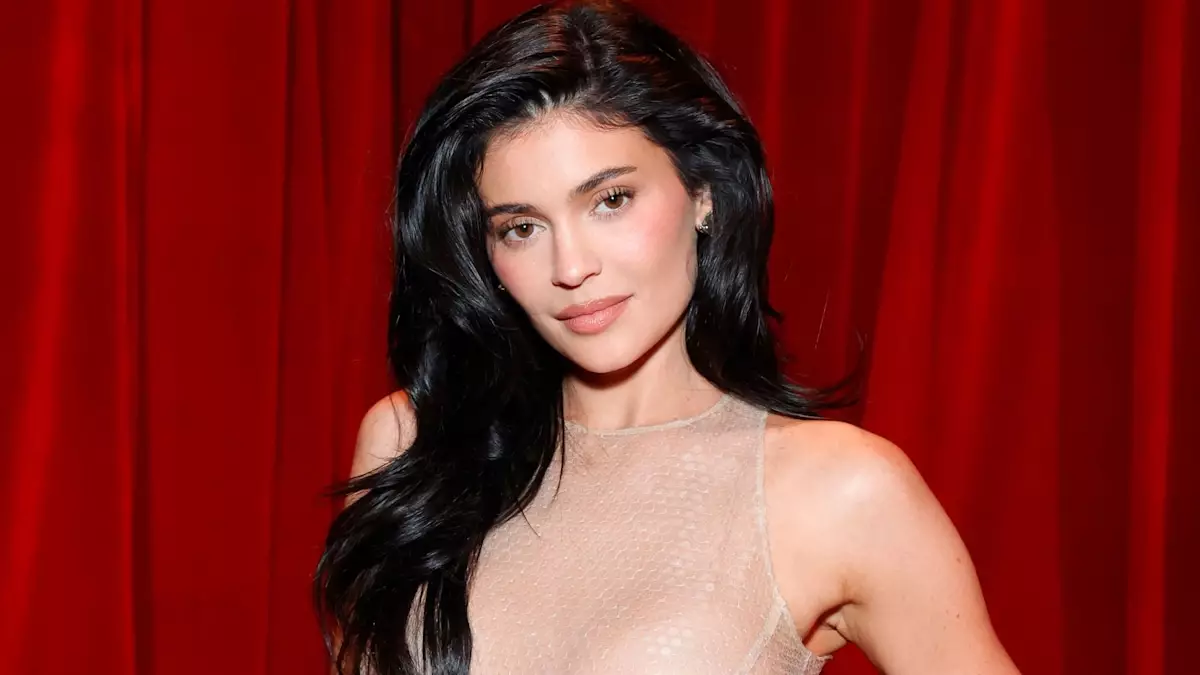When it comes to high-profile weddings, guests often face unspoken yet rigid fashion rules, especially concerning wedding attire. Recently, Kylie Jenner’s dress at Lauren Sanchez and Jeff Bezos’ lavish Italian wedding ignited a furious online debate not for its design or glamour, but for its daring color choice. Despite the event’s grand scale and star-studded roster, it was Kylie’s gown that captivated—and divided—attention. Designed by Dilara Findikoglu, the Turkish-British visionary known for pushing boundaries, the gown combined a corseted bodice, lace-up details, and subtle black bows with an “icy blue” hue that many perceived as dangerously close to white—a color traditionally reserved solely for brides.
Kylie’s choice, while clearly a fashion statement, challenged entrenched social etiquette. Critics stormed social media, accusing her of encroaching on the bride’s figurative and literal spotlight. Comments ranged from bafflement at the color choice to outright condemnation of what some described as tone-deaf behavior from someone as influential as Kylie. This backlash throws into sharp relief the fraught relationship between fashion autonomy and respect for tradition, especially within the hyper-visible sphere of celebrity society.
Examining the Rules: Tradition vs. Personal Expression
The controversy surfaces a larger question: To what extent should guests conform to traditional wedding dress codes? Historically, the rule against wearing white as a wedding guest is almost sacrosanct. It symbolizes reserving the pristine and exclusive visual domain for the bride on her special day. However, fashion is an evolving language, and colors like icy blue blur the neat boundaries of these conventions. Kylie’s dress teeters on this ambiguity—while the designer maintained it was “icy blue,” the public perception differed widely.
Moreover, the criticism aimed not just at the color but at the very audacity of a high-profile figure to essentially upstage the bride’s traditional visual claim. This raises questions about the expectations placed on celebrities in public events: should they continue to adhere strictly to conservative norms, or can they use these moments to reset what is considered acceptable? Kylie Jenner’s outfit serves as a potent case study in this tension, showing that even superstardom doesn’t grant immunity from public scrutiny—but it does spotlight ongoing cultural debates about expression versus etiquette.
The Setting and Stakes: An Epic, Exclusive Celebration
Lauren Sanchez and Jeff Bezos’ wedding was as opulent as one might expect from such a power couple. Held on the serene island of San Giorgio Maggiore in Venice, the event spanned a decadent three days, including a gothic candlelit welcome at Madonna dell’Orto church and an ultra-exclusive stay for 200 A-list guests at the Aman Hotel. Names like Oprah Winfrey, Leonardo DiCaprio, Orlando Bloom, and Kim Kardashian made clear that this was no ordinary ceremony—it was a trading floor of influence and status.
Lauren’s own gown, designed by Domenico Dolce, was a carefully curated statement, blending classic allure with personal significance. Her dress, which took over 18 months to design, featured silk chiffon buttons and a lace veil inspired by Sophia Loren’s iconic style. This meticulous dedication to tradition and vintage cinematic glamour contrasted sharply with Kylie’s polarizing contemporary choice, underscoring divergent philosophies of bridal and guest fashion.
Celebrity, Personal Branding, and Public Expectations
Kylie Jenner’s outfit choice cannot be divorced from the context of her celebrity identity and personal branding. As a style icon and a member of a family known for its media savvy, her every sartorial choice is magnified and interpreted through the twin prisms of fashion and public persona. The Kardashian-Jenner clan often thrives on boldness and rule-breaking, making Kylie’s “icy blue” gown a wrist flick at convention.
However, this also illustrates the double-edged sword of celebrity: visibility brings influence but also relentless criticism. The backlash shows that while fans may admire reinvention and audacity, social events steeped in tradition like weddings still elicit expectations of respect and subtlety—expectations Kylie arguably disrupted. Whether her choice was a calculated risk in pushing the envelope or a misjudgment, it undeniably sparked conversation, which might have been the true, if unspoken, objective from a celebrity-brand perspective.
Reflections on Etiquette in the Era of Individualism
Beyond the glitter and gossip, the debate surrounding Kylie Jenner’s gown taps into a broader cultural discourse about etiquette in an era that increasingly prizes individualism over conformity. Where once dress codes were often rigid and strictly enforced, today’s cultural landscape negotiates more fluid boundaries, influenced heavily by social media, celebrity culture, and evolving notions of respect.
While traditionalists may see Kylie’s choice as inappropriate, others might argue that such moments challenge outdated conventions and open space for new, personalized expressions of style—especially in an elite context where power dynamics and personal brands play as much a role as the ceremony itself. The conversation prompts us to reevaluate how and why certain dress codes endure, and whether rules meant to honor the bride might in fact sometimes stifle creativity and self-expression. Kylie Jenner’s dress may have crossed a line for some. But in doing so, it ratchets up the discussion on how we reconcile tradition with the modern quest for authenticity and recognition.

